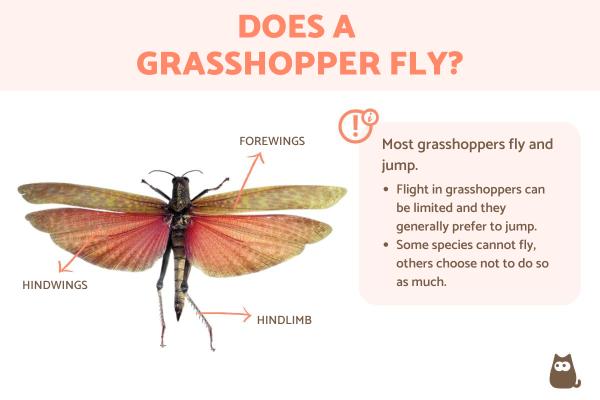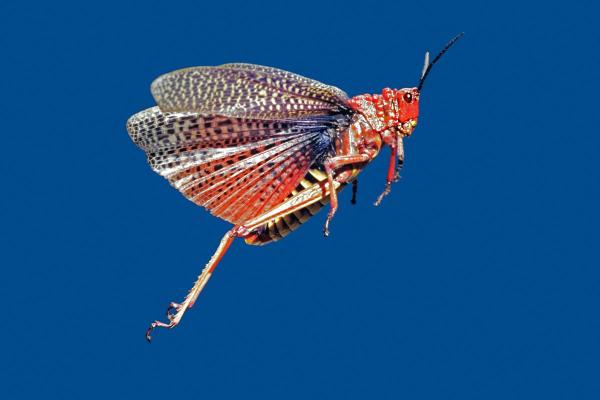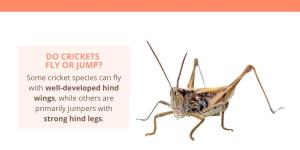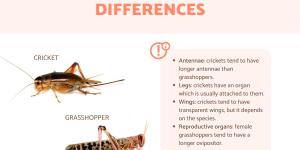Does a Grasshopper Fly?


Grasshoppers are members of the order Orthoptera, the order which also contains crickets. The name of this order translates as ‘straight wings’, referencing the wing anatomy of this insect species. While their taxonomic name references flight, their common name points toward their other defining ability, specifically their ability to jump. They are known to leap great distances, often between long blades of grass, hence the name grasshopper. This leads AnimalWised to ask does a grasshopper fly?
Generally speaking, grasshoppers can fly. However, not all have the same ability as others. Just because they can fly, doesn't mean grasshoppers will fly for long periods. It depends on their activity and other factors. We share more about flying in grasshoppers to find out why it is important for these insects.
Do grasshoppers fly?
Grasshoppers are known for their ability to jump relatively high and far distances. If we walk through a countryside with long grass, it is common to see grasshoppers leaping at our feet. It is not common to see them flying around us like dipterans (types of fly species). This makes some of us believe grasshoppers don't fly. While most do have the ability of flight, some do not.
Most grasshoppers have two pairs of wings, with the hindwings being larger and more developed than the forewings. These wings allow them to fly when necessary, although their flight may be limited. A grasshopper's wings give them the ability to glide and maneuver in the air, but they often prefer jumping as their primary method of movement.
Some of the variabilities in grasshopper flight include the following:
- Species: some species are considered brachypterous, meaning they have a greatly reduced wing size. Their wings are essentially vestigial and do not allow for the capability of flight. Flightless grasshopper species are in the minority. Some species may have a larger wing size, but simply do not choose to fly often, generally preferring terrestrial movement.
- Age: the nymph stage of grasshopper development often has underdeveloped wings. This means they do not yet have the ability to fly. Once they molt and mature into their adult form, their wings are sufficiently developed, they are then able to fly.
- Sex: grasshoppers display varying levels of sexual dimorphism. In some species, the males may have larger wings and a greater ability to fly than the females. This is often related to mating behaviors, since the males may need to fly to mate or compete with other males.
- Migration: not all grasshopper species are migratory. Those that are will generally fly more. They may even swarm in larger numbers, flying relatively great distances. For others, their daily activity might be such that they do not have much need to fly. Food, mates or places to rest may be easily found within hopping distance.
Although grasshoppers are capable of flight, most people identify them by their characteristic jumps. These jumps are possible thanks to their strong and muscular hind legs. These legs accumulate and release elastic energy efficiently to propel the insect forward with great speed and power.
Learn more about how anatomy influences behavior with our article asking do grasshoppers bite?

What types of grasshoppers fly?
Grasshoppers are a diverse group of insects. As stated above, some have the ability to fly, but not all do. Some grasshoppers have highly developed wings which are used for traveling very long distances. Others have shorter wings or comparatively heavy bodies, both of which can limit flight ability.
Of the types of grasshoppers that can fly, we can find:
- Migratory grasshoppers: some species of grasshoppers are known to make long-distance migrations in search of better feeding and reproductive conditions. Such species include the migratory locust (Locusta migratoria) and the American grasshopper (Schistocerca Americana). These grasshoppers can fly great distances and can be seen in large numbers during their seasonal migrations.
- Field grasshopper: many grasshopper species found in open areas have the ability to fly to escape predators or to find new places to feed. This is common in habitats such as grasslands and agricultural fields. An example of this type is the common green grasshopper (Omocestus viridulus).
- Arboreal grasshopper: some species of grasshopper are adapted to living in arboreal habitats, such as forests and rainforests. An example species is the long-winged conehead (Conocephalus fuscus). These grasshoppers can fly between trees to find food and shelter.
As we have seen, the grasshopper's flight behavior will vary greatly according to species, habitat and habit. The ability to fly is an evolutionary adaptation which allows many types of insects to navigate their environment. Grasshoppers have the evolutionary advantage of being able to jump great distances. This is often sufficient, even if they have the ability to fly.

How do grasshoppers fly?
Although their flight differs from that of other insects such as butterflies or flies, most grasshoppers have the capacity for flight. Their flight system is based on the unique characteristics of their wings and muscles, as well as their ability to control balance and direction in the air. Taking this into account, we look at how grasshoppers are able to fly:
- Wing anatomy: grasshoppers have two pairs of wings, with the hindwings being larger and more developed than the forewings. These wings are composed of thin, flexible membranes supported by a structure of veins. The hind wings are primarily responsible for flight, while the front wings act as stabilizers and help in flight control.
- Flight muscles: grasshoppers have flight muscles connected to the base of their wings. These muscles are specially developed and are capable of generating enough energy for flight. When a grasshopper decides to fly, the flight muscles contract rapidly, causing the wings to move up and down.
- Takeoff and flight: to take off into the air, a grasshopper uses its powerful hind legs to propel itself from the ground or an elevated surface. Once in the air, it begins to move its wings rapidly for support and propulsion. The movement of the wings creates an airflow that generates aerodynamic forces, allowing the grasshopper to rise and move through the air.
- Flight control: unless they are swarming, their flight tends to appear more disordered and less controlled than that of other flying insects. However, they are able to adjust the pitch and direction of flight using subtle movements of the wings and body. They can also use antennae and other sensory structures to detect changes in the environment and adjust their flight accordingly. When swarming, what may seem like random or disordered flight is actually highly controlled and minutely choreographed.
Now you know that most grasshoppers can fly, you may want to know more about the other members of Orthoptera. You can do so by reading our article on the differences between grasshoppers and crickets.

If you want to read similar articles to Does a Grasshopper Fly?, we recommend you visit our Facts about the animal kingdom category.
- Butler, E. M. (2013). Species-specific escape behavior in grasshoppers. Behavior, 150(13), 1531-1552.
- Forsman, A. (1999). Temperature influence on escape behavior in two species of pygmy grasshoppers. Ecoscience, 6(1), 35-40.
- Kutsch, W., Martz, H., & Gäde, G. (2002). Flight capability and flight motor pattern in a sedentary South African grasshopper, Phymateus morbillosus–a comparison with migratory species. Physiological Entomology, 27(1), 39-50.
- McAnelly, M.L., & Rankin, M.A. (1986). Migration in the grasshopper Melanoplus sanguinipes (Fab.). I. The capacity for flight in non-swarming populations. The Biological Bulletin, 170(3), 368-377.








